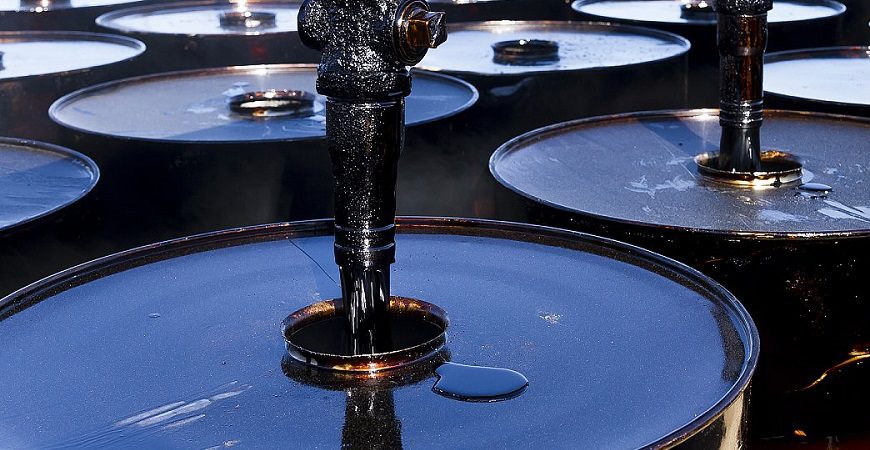Bitumen 40/50: A Versatile Material for Construction and Infrastructure
Bitumen 40/50 is a common grade of bitumen, a sticky, black substance derived from petroleum. It’s a vital component in various construction and infrastructure projects, particularly road construction and roofing. The numbers 40 and 50 refer to the penetration of a needle into the bitumen at specific temperatures, indicating its viscosity and hardness.
Key Specifications and Properties
- Penetration: 40-50 mm at 25°C and 60°C
- Softening Point: Typically between 60-80°C
- Ductility: Minimum 500 cm at 25°C
- Fractional Composition: Specific limits for various fractions
- Specific Gravity: Around 1.00-1.05 g/cm³
- Color: Black or dark brown
- Viscosity: Varies with temperature
- Water Resistance: Excellent
- Adhesion: Good to most surfaces
Applications of Bitumen 40/50
-
Road Construction:
- Asphalt pavements: Base and wearing courses
- Crack filling: Sealing cracks in roads
- Seal coats: Protective layers on existing pavements
-
Roofing:
- Bituminous membranes: Waterproofing layers for roofs
- Shingles: A component in asphalt shingles
-
Other Applications:
- Waterproofing: Sealing structures against moisture
- Adhesives: Bonding materials in various applications
- Industrial products: Coatings, sealants, and other products
Benefits of Using Bitumen 40/50
- Durability: Resists weathering, traffic loads, and chemical exposure
- Flexibility: Can withstand temperature fluctuations and deformations
- Waterproofing: Provides excellent protection against moisture penetration
- Adhesion: Bonds well to various surfaces
- Cost-effective: A relatively affordable option for many applications
In conclusion, bitumen 40/50 is a versatile and essential material in the construction industry. Its unique properties and wide range of applications make it a valuable asset in building roads, roofs, and other infrastructure.
The Production Process of Bitumen
Bitumen, a petroleum derivative, is produced as a byproduct of crude oil refining. The process involves several steps:
- Crude Oil Distillation: Crude oil is heated in a distillation tower, separating it into various components based on their boiling points.
- Vacuum Distillation: The heavier fractions remaining after the initial distillation are further processed in a vacuum tower to obtain bitumen.
- Asphalt Production: Bitumen is then blended with other components, such as fillers and additives, to produce asphalt, which is used in road construction.
Environmental Impact of Bitumen
While bitumen is a valuable resource, its production and use can have environmental implications:
- Greenhouse Gas Emissions: The burning of fossil fuels, including crude oil, contributes to greenhouse gas emissions.
- Air Pollution: Emissions from bitumen production and road traffic can contribute to air pollution.
- Water Pollution: Accidental spills or improper disposal of bitumen can contaminate water sources.
- Habitat Destruction: The extraction of crude oil can lead to habitat destruction and biodiversity loss.
Efforts are being made to reduce the environmental impact of bitumen, including the development of more sustainable production methods and the use of recycled asphalt. However, the challenge remains to balance the economic benefits of bitumen with its environmental costs.
Alternative Materials to Bitumen
While bitumen is a widely used material, there are alternative options available, particularly in efforts to reduce environmental impact and explore more sustainable solutions:
- Recycled Asphalt: Reusing old asphalt pavement can significantly reduce the need for new bitumen production.
- Rubberized Asphalt: Incorporating recycled rubber from tires into asphalt can improve its durability and reduce noise pollution.
- Concrete: In some cases, concrete can be used as an alternative to asphalt pavements, especially in areas with high traffic volumes.
- Bio-based Bitumen: Researchers are exploring the use of bio-based materials, such as plant oils and waste products, to create bitumen alternatives.
- Recycled Plastic: Incorporating recycled plastic into asphalt can improve its durability and reduce waste.
It’s important to note that the suitability of these alternative materials depends on various factors, including the specific application, local regulations, and cost considerations.
The Future of Bitumen
As the world becomes increasingly focused on sustainability and environmental responsibility, the future of bitumen is likely to evolve. Several trends and developments are shaping the industry:
- Increased Use of Recycled Materials: The incorporation of recycled asphalt, rubber, and plastic into bitumen can help reduce waste and conserve resources.
- Development of Sustainable Alternatives: Research and development efforts are focused on creating bio-based bitumen alternatives that have a lower environmental impact.
- Improved Production Processes: Advancements in technology are leading to more efficient and environmentally friendly bitumen production methods.
- Stricter Environmental Regulations: Governments are implementing stricter regulations to address the environmental concerns associated with bitumen production and use.
Despite these challenges, bitumen remains a vital component in infrastructure development. As the industry continues to adapt and innovate, it is likely that bitumen will play a role in building a sustainable future.
Environmental Regulations and Bitumen
Environmental regulations play a crucial role in shaping the bitumen industry. Governments worldwide have implemented various measures to address the environmental concerns associated with bitumen production, transportation, and use. These regulations often focus on:
- Greenhouse Gas Emissions: Reducing greenhouse gas emissions from bitumen production and combustion.
- Air Pollution: Limiting emissions of pollutants such as particulate matter, volatile organic compounds, and nitrogen oxides.
- Water Pollution: Preventing water contamination from bitumen spills, leaks, and runoff.
- Habitat Destruction: Protecting ecosystems and biodiversity during bitumen extraction and transportation.
Compliance with these regulations can be challenging for the bitumen industry, but it is essential to ensure sustainable practices and protect the environment.
Source:

